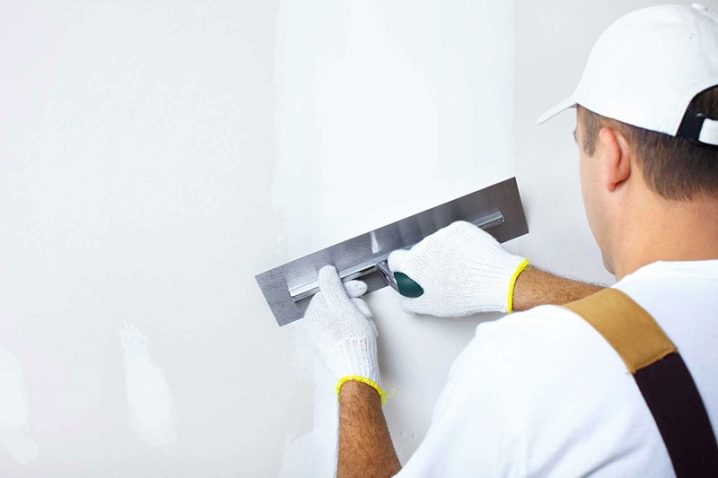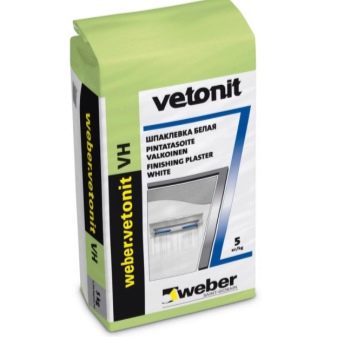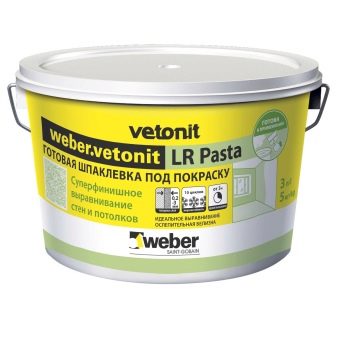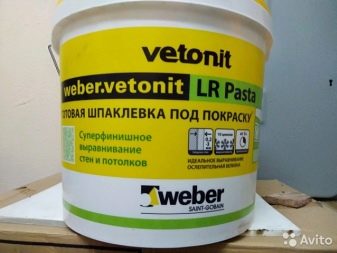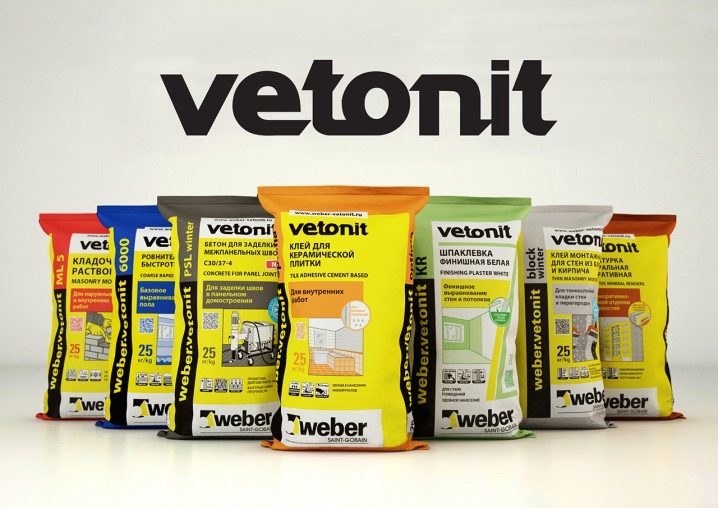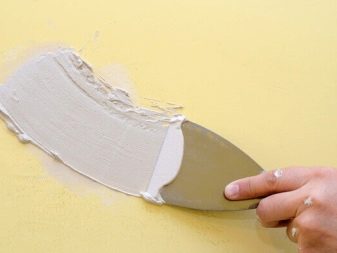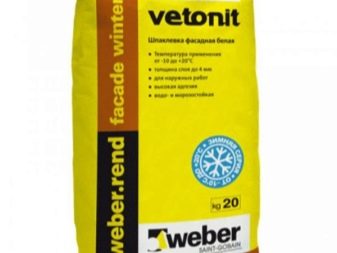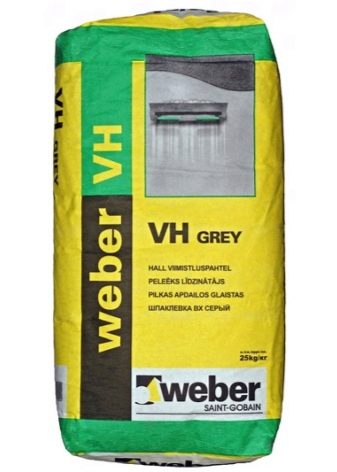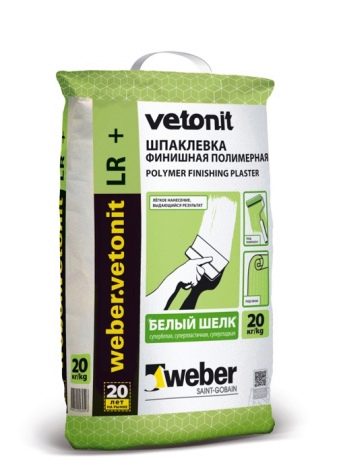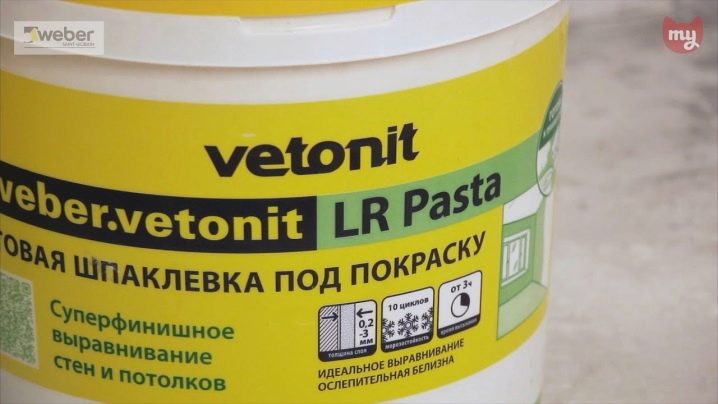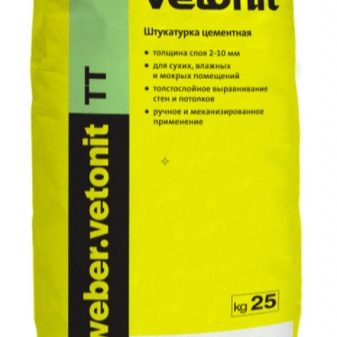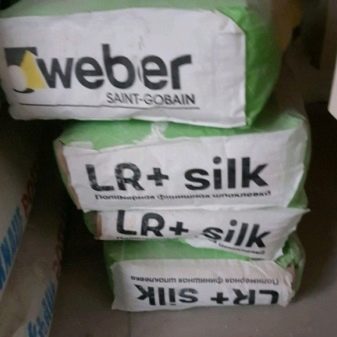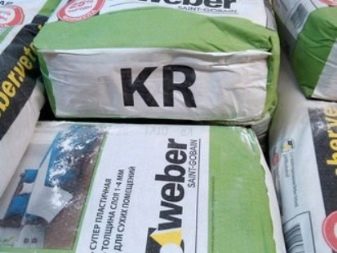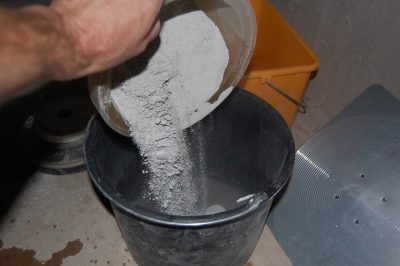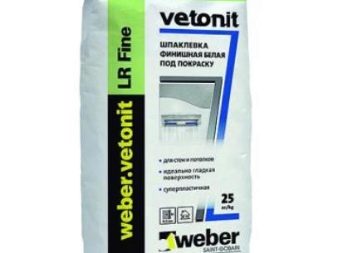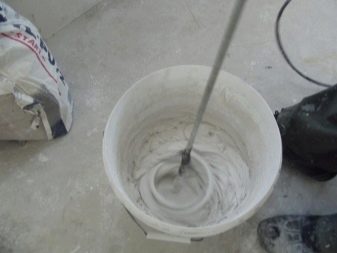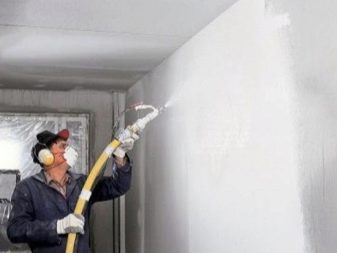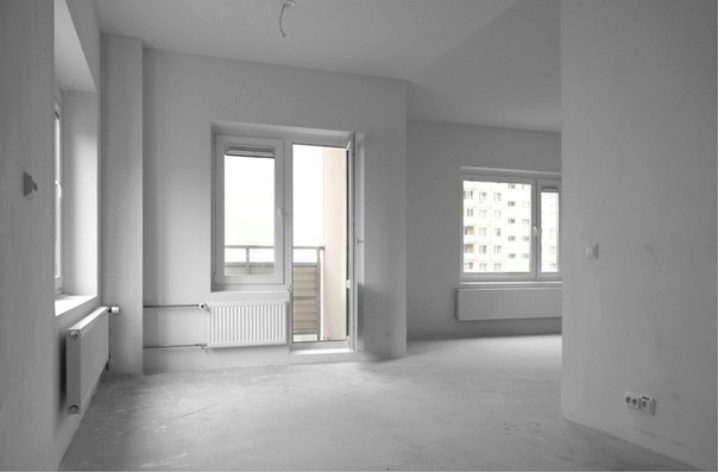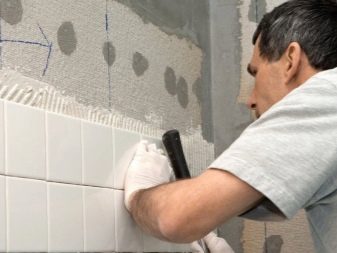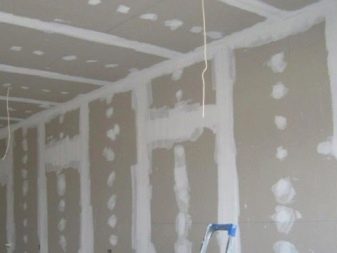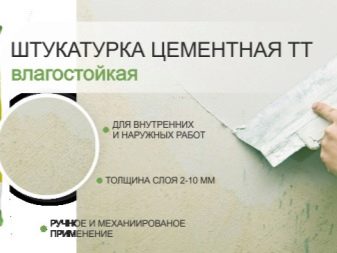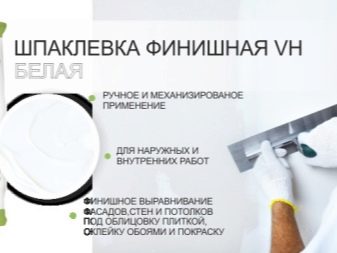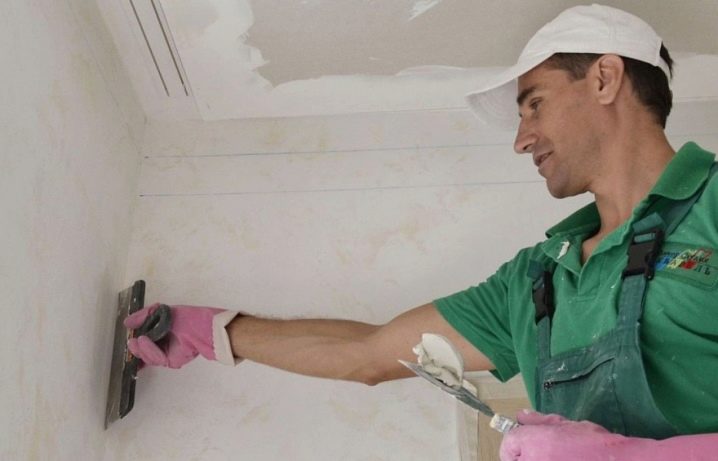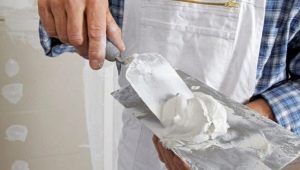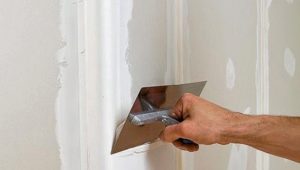Putty Vetonit: advantages and disadvantages
Repair and construction work and putty are interrelated concepts, as finishing works are unthinkable without leveling the walls with a paste-like mixture - putty. It is thanks to this composition that the walls have a perfect, perfect look, on which you can later glue the wallpaper, apply decorative plaster. Today, manufacturers offer a huge amount of putty in the construction market, and to figure out which one is the most suitable for repair, you should listen to expert advice.
Special features
Very often, when choosing a tool for processing and leveling walls in stores, a person is at a loss — there are two different names on packs of mineral mixtures on a bonding basis: putty and putty.
Powdered (or in the form of a paste) mixture, which consists of gypsum, mineral fillers, chalk and wood glue is called putty. Manufacturers offer types of this building material with different composition:
- based on latex components;
- oil;
- oil-adhesive;
- acrylic.
Depending on the composition of the filler is used only for internal or external works. The principle of using putty is similar, and it should be noted that there is no fundamental difference between these names.
One of the best putty specialists in the construction field consider Weber Vetonit. The manufacturer of this building material is considered to be world famous - it is a subsidiary of the industrial group Saint-Gobain, formed back in 1900.
Today, Weber is a leader in the production of dry building mixes. Enterprises of the company are present in all parts of the world, releasing a range of products for construction and repair work.
The undoubted advantages of Weber Vetonit putty:
- the mixture is made from ecological raw materials - it does not emit toxic substances;
- moisture resistance - it is used even in the construction of pools;
- the composition is powdery, so the surface of the treated wall becomes perfectly smooth;
- a snowflake painted on the mix packaging indicates that it can be used at low temperatures for the facade;
- the composition in diluted form can be stored for a day.
Types and composition
Vetonit putty is used at the final stage of finishing works before directly gluing wallpaper or decorating it with decorative plaster. The basis for the putty is the ceiling and a smooth surface, not necessarily concrete, but also drywall. The main factor for such a process is the presence of a dry surface, since otherwise yellow spots will appear through the putty.
The main composition of the dry mixture Vetonit - aggregate (limestone) and a binder. However, some types of putty are slightly different from each other. First of all, you should pay attention to the notation that manufacturers use: mixtures with LR markings are used only for dry rooms, VH - in rooms with high humidity.
In the list of building mixtures there are two types with similar names: Weber. Vetonit LR and Weber. Vetonit LR + silk.
- Putty Weber. Vetonit LR - it is a paste, which is the most popular mixture for processing surfaces, which are going to apply wallpaper or paint.It perfectly aligns the walls, but is used only in dry, heated rooms. Vetonit LR is not a moisture-proof material, it is not suitable for laying tiles. As a binder, polymer glue is used here. Putty is ideally applied to the surface and with little effort. Retains its properties after dilution with water for more than a day.
It is recommended to apply Vetonit LR in two layers. Packed in two types of packaging: 5 and 25 kg.
- Weber. Vetonit LR + silk - the excellent decision for finishing processing of walls and a ceiling of the room. The mixture is very quickly diluted and applied in a thin layer. It has a high whiteness, for which it was called "white silk". Experts believe that it is most convenient to use.
- Vetonit TT - universal composition, used at the start and finish. The basis of the mixture is cement. It can be used both indoors and outdoors. It is frost resistant and not afraid of water. The putty is also applied as a base coat and before laying the tile. Diluted with water and mixed with a drill. The resulting solution must be used within three hours. Sold in a three-ply paper bag weighing 25 kg.
After applying the first layer, you must wait until it has completely dried and hardened - this usually happens after 1-2 days.
- Packing marked KR used for finishing (finishing) work before sticking wallpaper or painting walls. Packed in bags of 5 and 20 kg. It is used only in dry rooms, ideally applied in thin layers up to 3 mm. The binding element in this composition is glue based on organic substances, which explains the specific smell when applied. After drying, the smell disappears. In diluted form, Vetonit KR can be stored for 30 hours in an open container and twice as long in a closed one.
- Moisture-resistant putty Weber. Vetonit VH perfect for both exterior and interior work. Easy to apply on concrete and foam concrete. Paste prevents the appearance of condensation on the ceiling, so it is widely used in areas where there is moisture. Plus, the manufacturer Weber offers for a full range of decorating works inter-tile grouting of various color shades on a cement basis.
The grout is used in work with any tiles and mosaics: floor and wall.This material is frost resistant and does not pollute the tile surface.
Specifications
Quality mixes from Vetonit have a lot of advantages compared to counterparts from other manufacturers. First of all, it is their technical characteristics, or rather, methods of breeding putties.
First of all, it is necessary to dilute the powder with water in the required proportions. It depends on the thickness of the paste applied to the surface of the walls. In some cases - it is from 0.5 mm to 3 mm, in other putty should be thicker.
It is necessary to correctly calculate the number of packages of the mixture for the room. For example, when using white polymer mixture - superfinishing putty Vetonit LR Fine for the ceiling and walls of dry rooms - the consumption per 1 m2 will be 1.2 kilograms of the mixture.
The mixture itself in water should not be dissolved completely, but in portions. Water should not be very cold - about 20 degrees is enough. Then you must wait until the mixture is infused. After that, it must be once again thoroughly mixed using a special mixer or an ordinary drill.
The mixture is applied in two ways:
- using special equipment by mechanical spraying;
- manually, applying the finished mixture on a spatula and rubbing it over the surface of the walls.
In any case, the finished layer of plaster should not exceed 5mm, otherwise it will dry for a long time, and the next stage of work will have to be delayed.
In order not to be mistaken in the choice, you should pay attention to the appearance of the mixture. According to GOST, Vetonit can be gray or white. The differences are explained by the composition of the mixture - if it contains gypsum, limestone or finely ground marble, the mixture will be lighter. It is necessary to pay attention to the expiration date, which the manufacturer indicates on the package itself - it should not exceed 18 months.
Scope of application
The company-manufacturer offers modern customers the whole complex solutions in the field of construction: from the starting and finishing wall covering to the facade insulation.
All types of putties produced in the factories of the company are ideal for finishing work in the room and on the front part of it.
Most of the mixtures are made on the basis of polymer components, which are binders in finished form. After the putty is applied to the wall or ceiling, it hardens, after which you can glue the wallpaper on it or simply paint the surface.
Depending on which putty is chosen: for dry rooms or rooms with high humidity, Vetonit will provide the perfect appearance of the treated surfaces. After drying, the walls can be finished with tiles, glass or plastic.
Use putty and for high-quality sealing plasterboard, on the surface of which is then eliminated the appearance of cracks.
After the process of filling the walls is completed, an unpleasant smell can appear in the room. However, it disappears immediately after the mixture dries. This feature is inherent in many materials for construction work.
If you are using gypsum plaster "Vetonit", then after the work performed, you can put a putty on it - a high-quality mixture will extend its service life. Choosing to work in wet areas (in the bathroom, in the kitchen or in the pool) moisture-proof mixture with a VH mark on the package, you can not worry - she is not afraid of a wet environment. That is why this composition is often used in the processing of warehouse space and the facade of the building.
Special mixtures such as Vetonit TT are also used on the surface consisting of ceramic bricks or aerated concrete.Such putty is frost-resistant, neither mold nor fungus will appear on it, which is very important in regions where the climate is cold and humid.
Tips for choosing
According to experts, all Vetonit products have two important qualities: it is very convenient and seamless to apply to the surface, and the preparation of the finished mixture takes a few minutes.
However, it is necessary to take into account useful tips when working with the material:
- It is important to remember that the rest of the mixture in no case can not be poured into the sink or toilet.
- Before processing with a putty, the surface of the walls or ceiling must be thoroughly dried.
- For the basement or bathroom, you should choose only the package “Vetonit TT”, as it is universal and not afraid of moisture, besides it is made on a cement basis. Such a composition must be mixed with water in a ratio of 25 kg to 6 liters of water.
- The surface to be treated should be clean, free from stains and dust, and if it is very dry, it should be moistened.
- The minimum layer of the applied mixture is 0.5 mm, the maximum - 0.7 mm.
- To putty the surface with “Vetonit” on a glue base is necessary when everything is already dry, and only then glue the wallpaper.
How to self-putty walls, you will learn from the following video.

